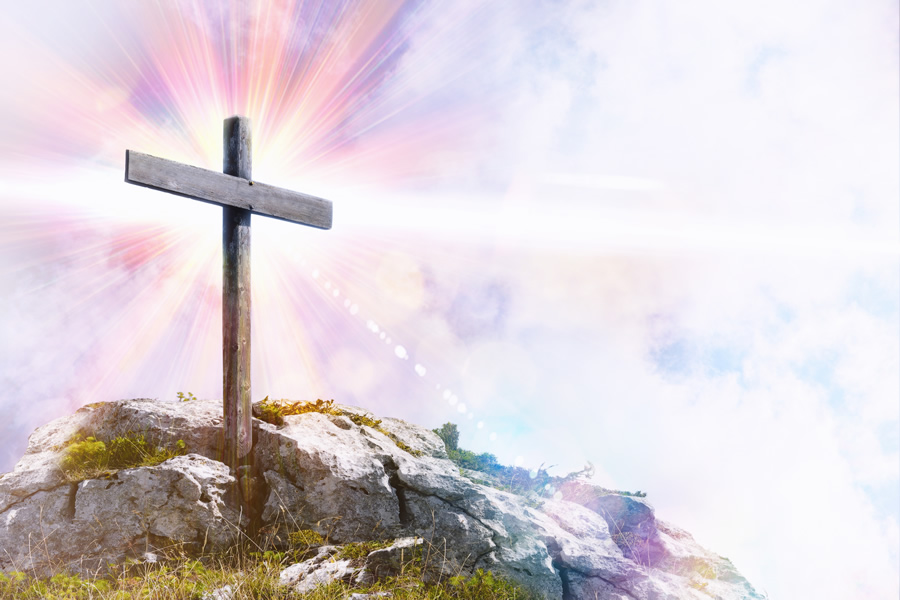
Feast of the Exaltation of the Cross
by Rev. Gabriel Baltes, O.S.B. | 09/14/2025 | A Message from Our PastorDear Parishioners,
September 14th is the Feast of the Exaltation of the Holy Cross. This ancient Christian festival, common to the churches of both the East and West, emerged in the early 4th century after St. Helena, the mother of the Roman Emperor Constantine, discovered the actual cross on which Jesus died. Her discovery of the cross came as the result of an excavation expedition that she organized in Jerusalem. In the process of her excavation of the church of the Holy Sepulcher three crosses were found. Of these three, the cross of Jesus was identified when it was touched to a dying woman who was subsequently healed. An alternative legend to this one maintains that when a paralyzed man touched the cross of Jesus, the man regained his ability to walk.
The precise details of this miracle are not as significant as the fact that someone, i.e., Helena, deemed it important to search for the authentic cross of Christ -- an instrument of humiliation, torture and death. The hideous nature of this form of capital punishment made it reserved for slaves, foreigners and the most notorious criminals who were perceived to be grave enemies of the state. But then one night, the emperor Constantine had a vision of the cross with an inscription that read, “In this sign you will conquer.” He immediately ordered the cross to be painted on the shields of his soldiers who were preparing for battle. Constantine attributed their victory in this battle to Jesus Christ. As an act of gratitude he legalized Christianity throughout the Roman Empire and was baptized a Christian himself.
Very soon, the wooden cross, that had been a sign of death and defeat, became a symbol of victory and life. It was regarded as the most precious relic worthy of adoration. It was placed in a silver reliquary that was enshrined in a basilica that was built to its honor and able to accommodate the large number of pilgrims who journeyed to the Holy Land to see, touch or be near it. On the anniversary of the dedication of this basilica (September 14), the relic of the cross was taken from its reliquary and lifted up before all the people as an act of veneration. This lifting up, or “exaltation”, was the origin of today’s feast which takes its name from the ritual gesture just described. Like other relics of the church’s history, the cross came to be recognized as a healing instrument, a type of talisman with supernatural powers.
It ultimately became the most identifying symbol of Christianity and remains so even to this day. It is used to mark our homes, churches, cemeteries and other physical places. It is worn as jewelry and sometimes mere decoration. But for the followers of Christ, the cross is far more than a material object. It is the great paradox of life through death essentially linked to the resurrection of Jesus. It is the source of our redemption that reveals God’s boundless love for the world as witnessed by Jesus…
who, though he was in the form of God,
did not count equality with God a thing to be grasped
but emptied himself, taking the form of a servant, [a] being born in the likeness of men.
And being found in human form he humbled himself
and became obedient unto death, even death on a cross.
Therefore God has highly exalted him
and bestowed on him the name which is above every name,
that at the name of Jesus every knee should bow,
in heaven and on earth and under the earth,
and every tongue confess that Jesus Christ is Lord,
to the glory of God the Father.
Philippians 6: 2-11
May the Holy Cross that marks all our lives, be for us a source for gratitude and the promise of new life.
Blessings,
Fr. Gabriel O.S.B.
BACK TO LIST